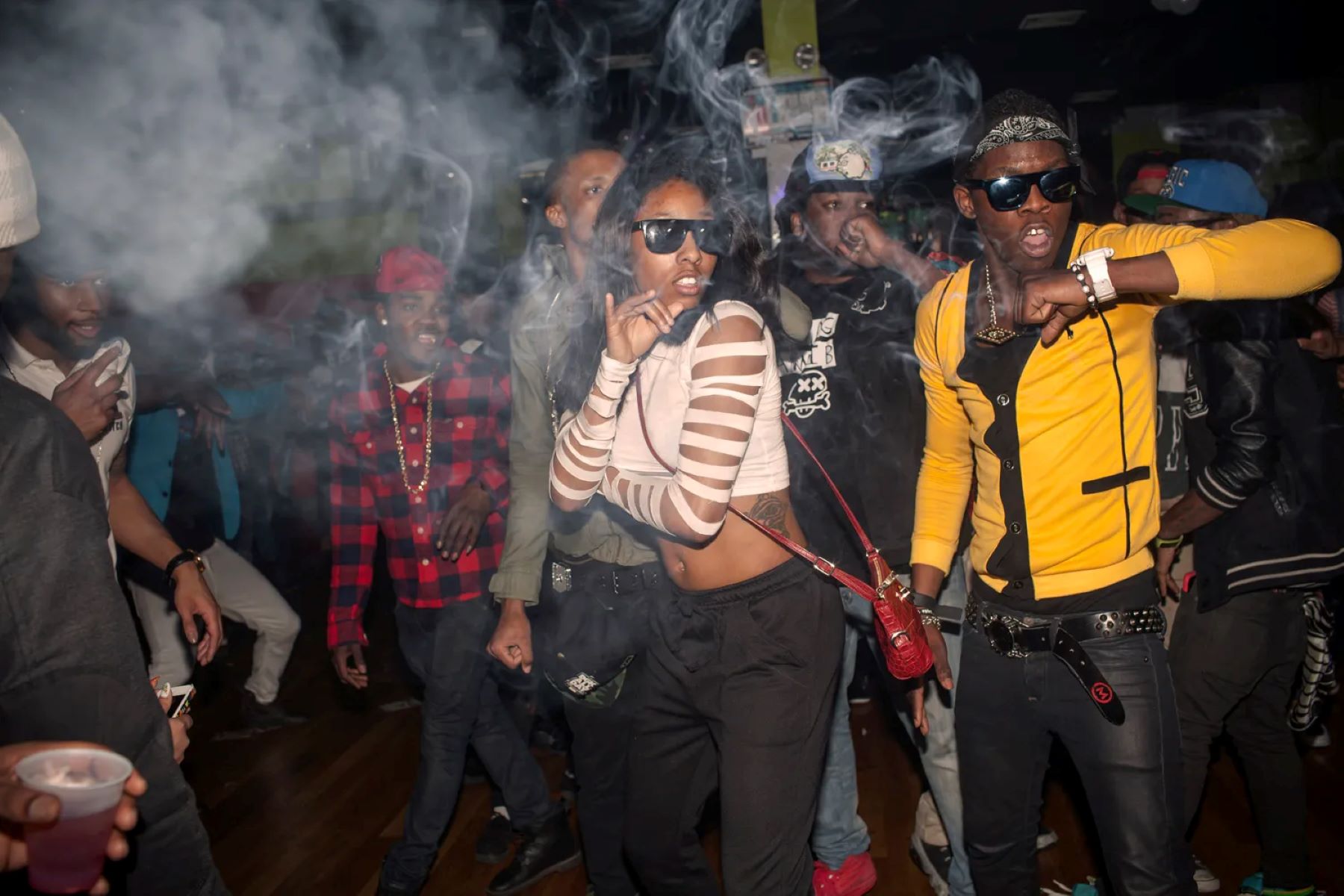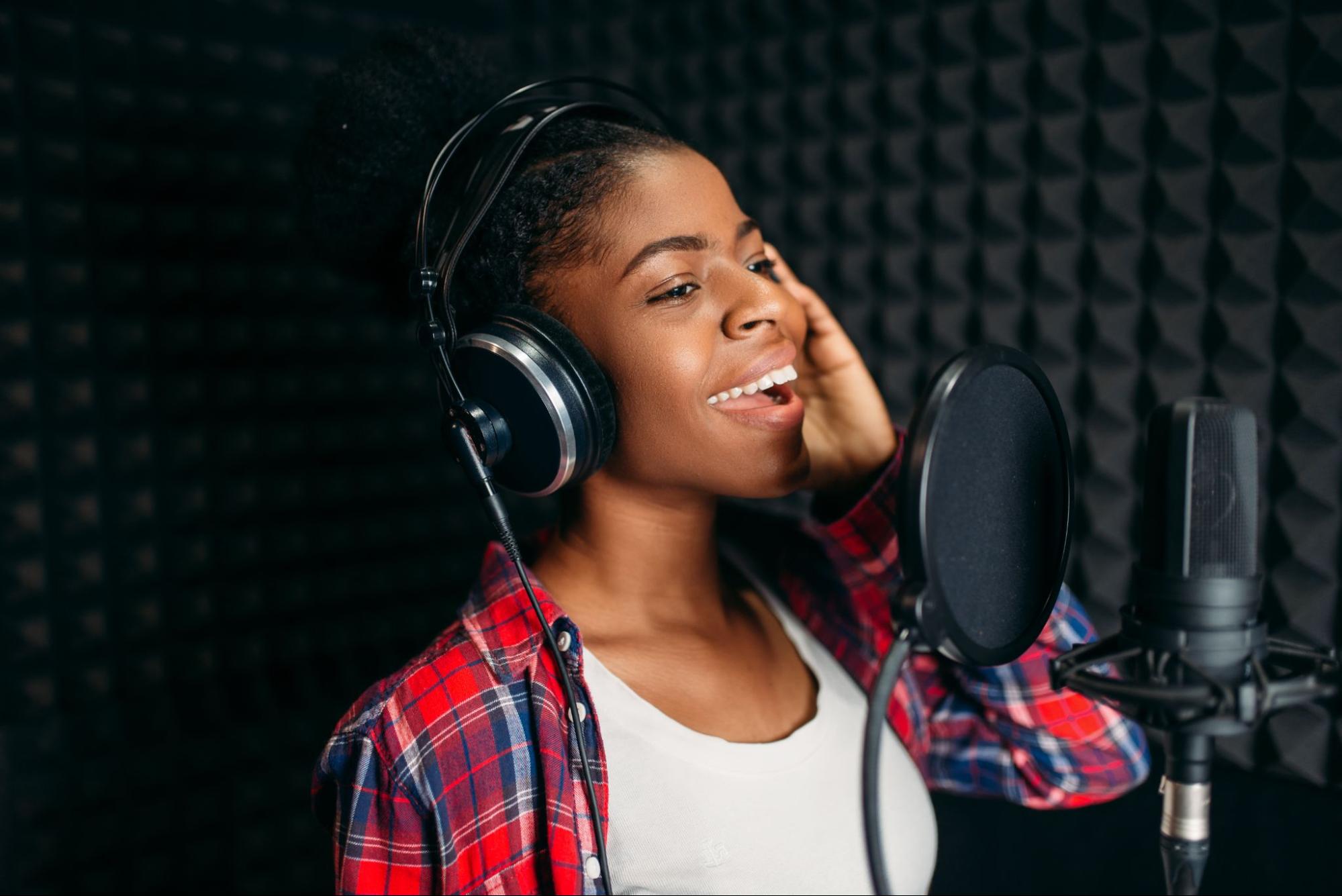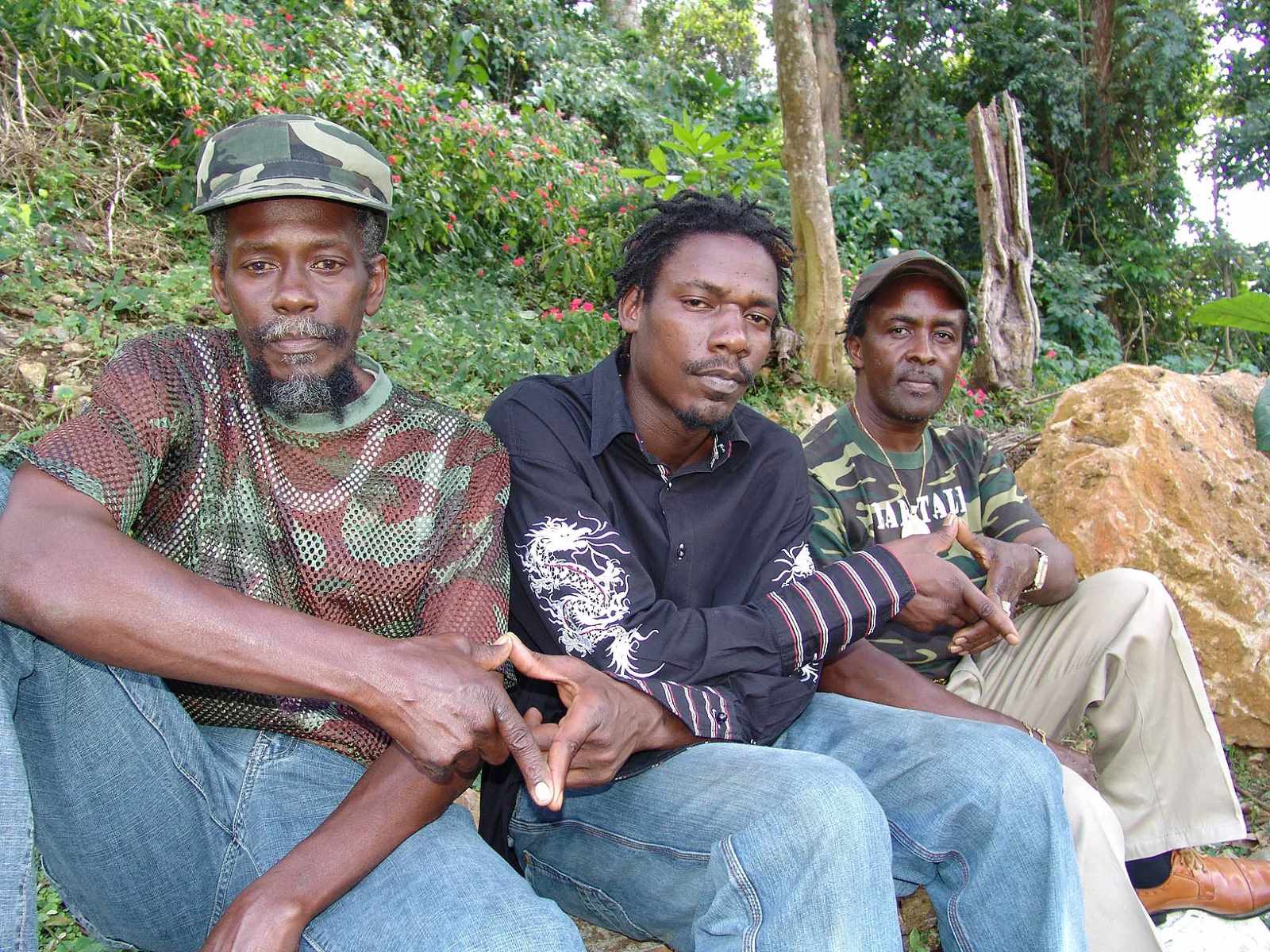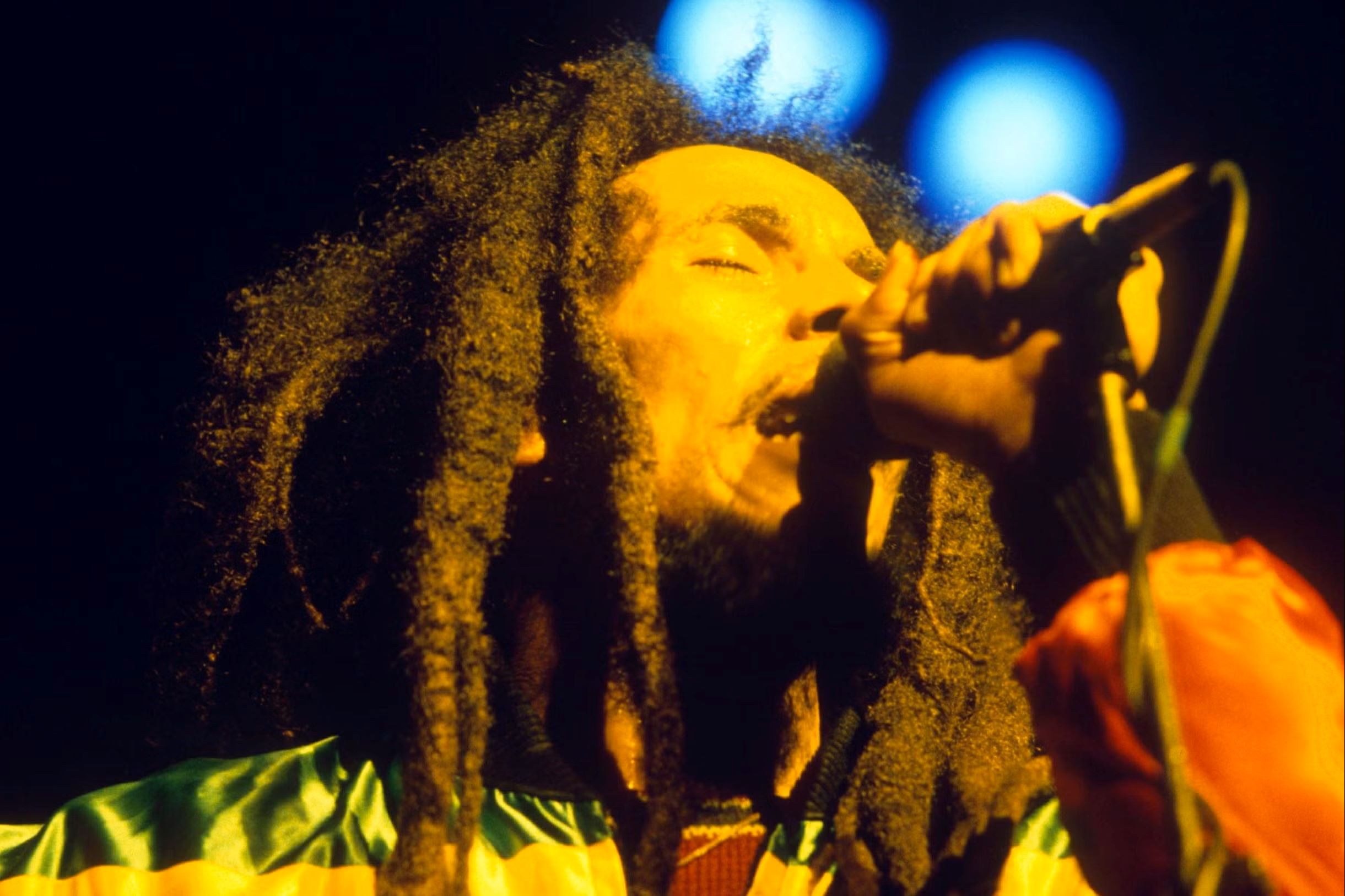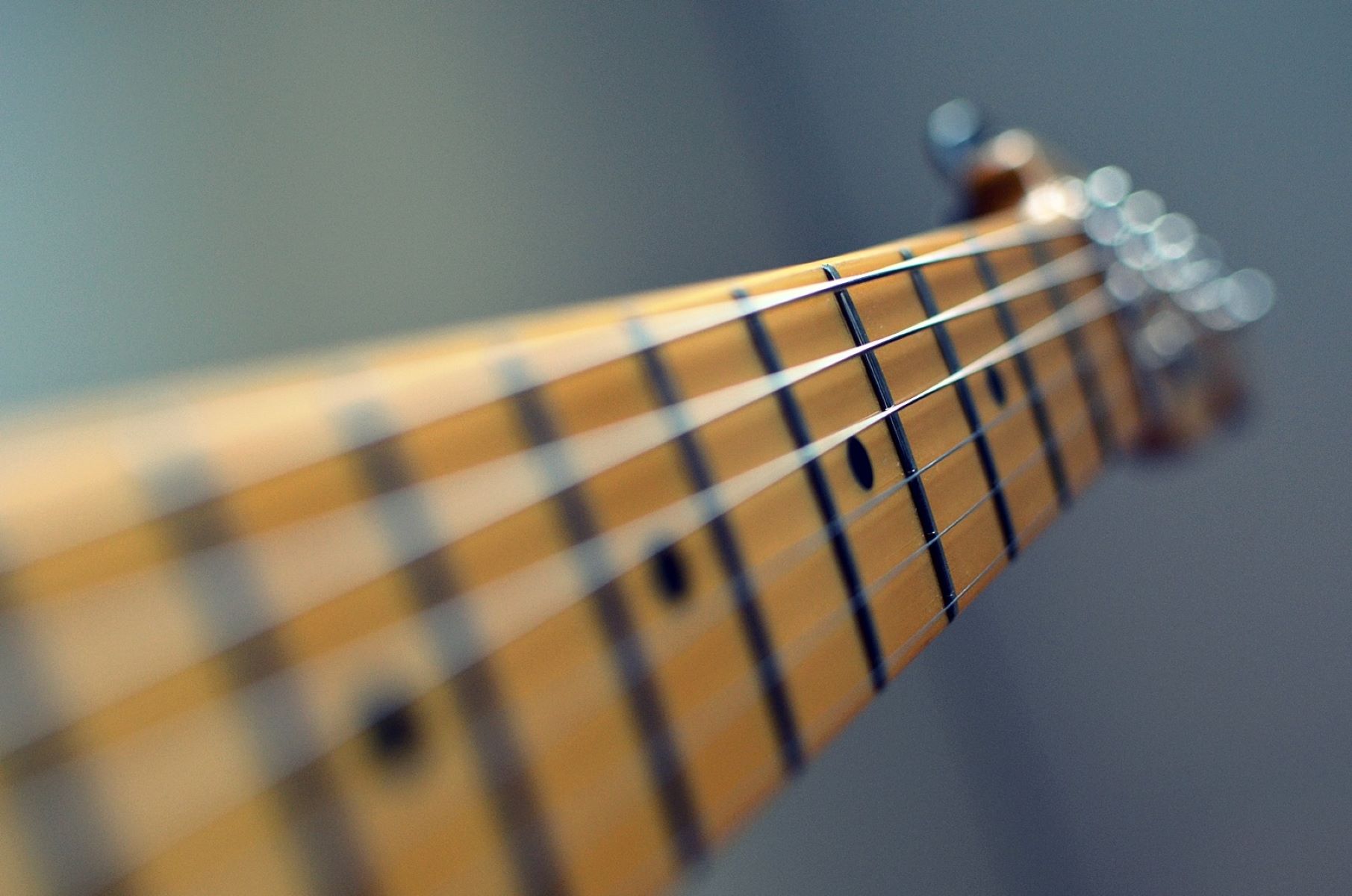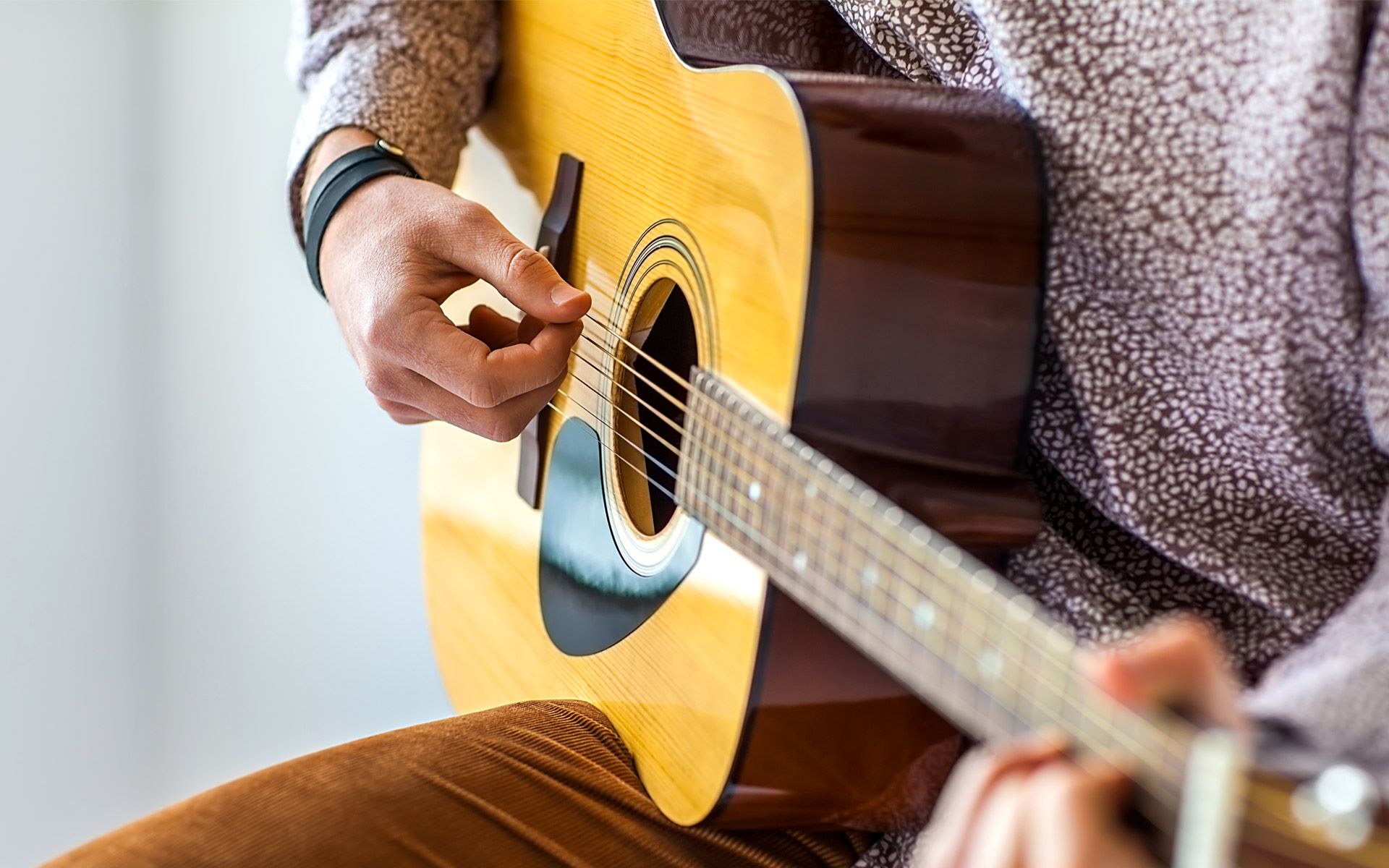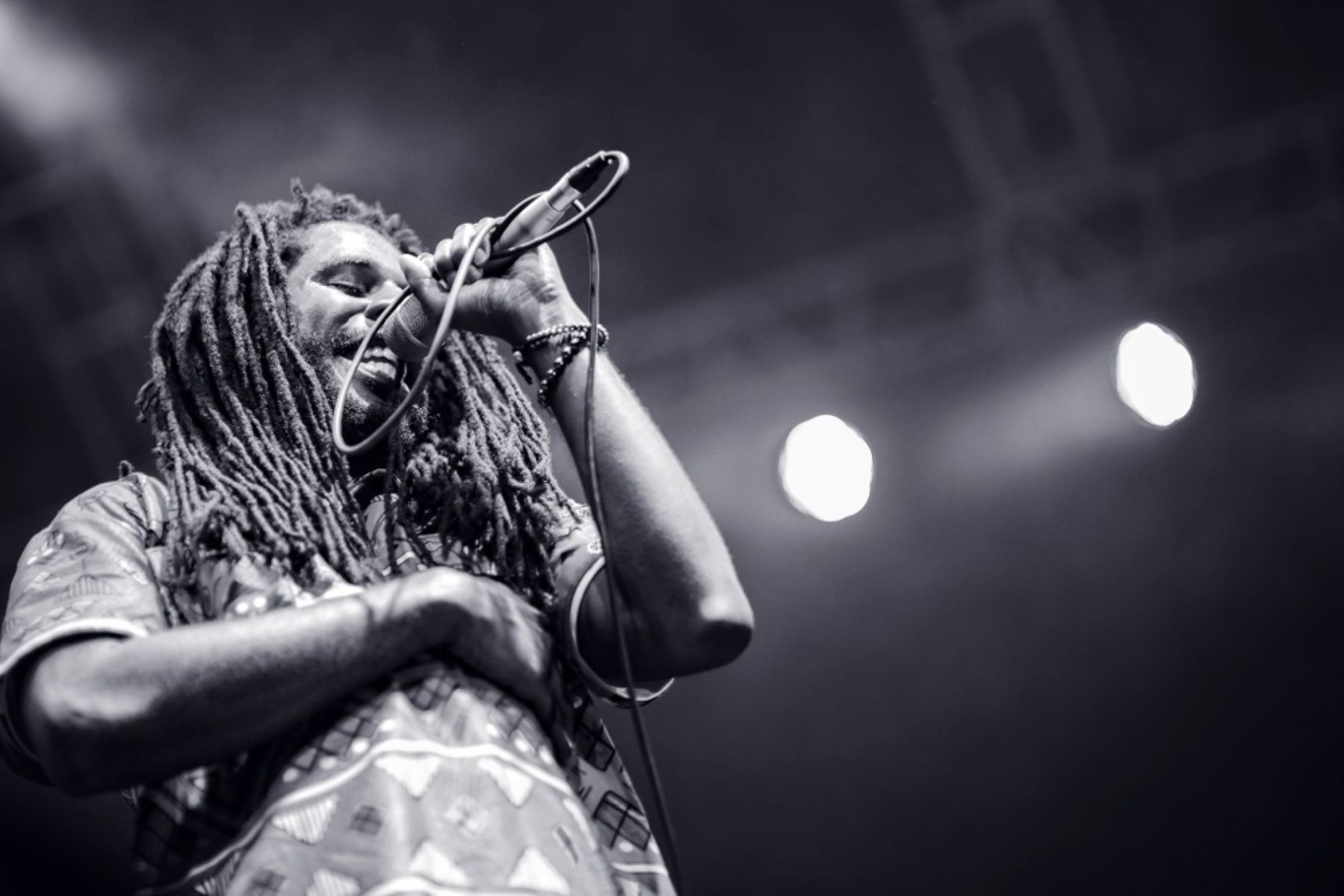

Reggae
What Is Reggae Rapping
Modified: March 3, 2024
Learn about the art of reggae rapping, its history, and unique style. Discover how reggae and rap combine to create a powerful and soulful musical genre.
(Many of the links in this article redirect to a specific reviewed product. Your purchase of these products through affiliate links helps to generate commission for AudioLover.com, at no extra cost. Learn more)
Table of Contents
Introduction
Reggae rapping, a unique form of musical expression, combines the rhythms and melodies of reggae music with the lyrical flow and delivery of rapping. With its origins deeply rooted in Jamaican culture, reggae rapping has evolved into a powerful art form that not only entertains but also conveys important social and political messages.
Reggae, a genre characterized by its laid-back tempo and distinct syncopated rhythms, emerged in the late 1960s in Jamaica. It gained international recognition in the 1970s through the iconic music of artists like Bob Marley, Peter Tosh, and Jimmy Cliff. Drawing influences from various musical styles such as ska, rocksteady, and mento, reggae became synonymous with the island’s vibrant musical heritage.
Rapping, on the other hand, originated in African American communities in the United States during the late 1970s and early 1980s. It involves the rhythmic and rhyming delivery of spoken word over a musical backdrop. This form of expression quickly gained popularity and became a pillar of hip-hop culture.
Reggae rapping emerged as a natural fusion of reggae music and the lyrical and rhythmic elements of rapping. It combines the rich storytelling tradition of reggae with the fast-paced, intricate wordplay of rap. This unique combination allows artists to deliver their messages with both melody and verbal dexterity, creating a dynamic and captivating musical experience.
Reggae rapping has garnered a global following and has found resonance among diverse audiences. Its infectious rhythms and socially conscious lyrics have made it a powerful tool for cultural expression and activism. The genre has expanded beyond Jamaica’s shores, influencing artists around the world and transcending language and cultural barriers.
This article explores the origins, characteristics, key artists, technique and style, as well as the social and political messages found within reggae rapping. Additionally, it delves into the commercial success and impact of this unique style of music, highlighting its enduring influence on the global music landscape.
Let us now delve deeper into the origins of reggae rapping and explore the roots of this compelling and influential musical genre.
Origins of Reggae Rapping
The origins of reggae rapping can be traced back to the streets of Jamaica, where it emerged as a natural evolution of the island’s rich musical heritage. In the late 1970s, as reggae music began to flourish, a new generation of artists were experimenting with different lyrical styles and vocal deliveries.
One of the key figures in the development of reggae rapping was the legendary Jamaican deejay U-Roy (also known as Daddy U-Roy). U-Roy’s innovative style involved toasting, which is the rhythmic chanting or talking over a reggae beat. His smooth delivery and ability to seamlessly blend lyrics with the music set the stage for the emergence of reggae rapping.
Another influential figure in the birth of reggae rapping was Big Youth. Known for his deep, melodic voice and conscious lyrics, Big Youth incorporated elements of rapping into his performances, adding a new dynamic to reggae music. His influential album “Screaming Target” is considered a groundbreaking release in the reggae rapping genre.
Reggae rapping gained further traction in the late 1970s and early 1980s with the rise of dancehall music. Dancehall, a genre closely related to reggae, provided a platform for artists to showcase their lyrical prowess and unique vocal styles. Artists like Yellowman, Sister Nancy, and Eek-a-Mouse became known for their skillful combination of reggae music with rapping.
The influence of American hip-hop and rap music cannot be overlooked in the development of reggae rapping. As hip-hop exploded onto the global music scene in the 1980s, Jamaican artists began incorporating elements of rap into their music. This cross-pollination of genres resulted in a fusion of styles, giving birth to a new wave of reggae rappers.
Today, reggae rapping continues to evolve with artists like Damian Marley, Kabaka Pyramid, and Chronixx pushing the boundaries and redefining the boundaries of the genre. Their innovative approach to combining reggae and rap elements showcases the continued vitality and relevance of this captivating musical style.
The origins of reggae rapping lie in Jamaica’s rich musical tapestry, fusing the island’s reggae traditions with elements of rapping and hip-hop. This unique hybrid genre has captivated audiences worldwide and continues to inspire new generations of artists to explore the boundaries of musical expression.
Characteristics of Reggae Rapping
Reggae rapping is characterized by a distinct set of elements that differentiate it from other forms of musical expression. It combines the rhythmic elements of reggae music with the lyrical flow and delivery of rapping, creating a unique and captivating sound. Here are some key characteristics of reggae rapping:
- Rhythmic groove: Reggae rapping is built upon the infectious grooves of reggae music. The laid-back tempo, syncopated rhythms, and prominent basslines provide a solid foundation for the lyrical delivery. The rhythmic flow of the rapping complements the groove, creating a seamless fusion of melody and wordplay.
- Chanting and toasting: Reggae rappers often incorporate elements of chanting and toasting into their performances. This ranges from rhythmic spoken word passages to melodic sing-song patterns. These vocal techniques add depth and character to the lyrical delivery, enhancing the overall musical experience.
- Dual-language usage: Many reggae rappers seamlessly switch between English and Jamaican Patois (a creole language) in their lyrics. This dual-language usage adds a unique flavor to the music, reflecting the multicultural and multilingual nature of Jamaican society. It also serves as a nod to the genre’s roots and authenticity.
- Storytelling and social commentary: Reggae rappers often use their lyrics to tell stories and convey powerful social and political messages. Rooted in the rich storytelling tradition of reggae music, these narratives touch upon a wide range of topics such as love, struggle, spirituality, and social justice. Reggae rappers have historically been known for their insightful commentary on social issues, using their platform to voice concerns and advocate for change.
- Wordplay and improvisation: The lyrical delivery in reggae rapping involves intricate wordplay, as artists skillfully weave together rhymes, alliterations, metaphors, and cultural references. Improvisation plays a significant role, with reggae rappers often freestyling or adding spontaneous verses to their performances. This creative approach adds spontaneity and authenticity to the music.
- Collaborations and cross-genre influences: Reggae rapping frequently involves collaborations with artists from different genres. This cross-pollination of styles further pushes the boundaries of reggae rapping, resulting in innovative blends of sounds and influences. Artists from hip-hop, dancehall, reggaeton, and other genres often lend their unique perspectives, contributing to the diversity and richness of reggae rapping.
These characteristics contribute to the distinctiveness and allure of reggae rapping. The fusion of reggae music and rapping creates a dynamic and engaging form of expression that resonates with audiences worldwide. Reggae rappers skillfully blend the best of both traditions, bridging the gap between genres and cultures, and captivating listeners with their powerful message and infectious rhythm.
Influences on Reggae Rapping
Reggae rapping, as a genre that blends the rhythmic elements of reggae music with the lyrical flow of rapping, is influenced by a wide range of musical styles and cultural movements. The following are some key influences that have shaped the development and evolution of reggae rapping:
- Reggae Music: The foundation of reggae rapping lies in the rich musical traditions of reggae. Artists like Bob Marley, Peter Tosh, and Jimmy Cliff paved the way for the integration of rapping into reggae through their incorporation of chant-like vocals and poetic storytelling. The infectious rhythms and conscious lyrics of reggae continue to be a driving force in reggae rapping.
- Hip-Hop and Rap: American hip-hop and rap music played a significant role in influencing reggae rapping. In the 1980s, as rap music gained popularity worldwide, Jamaican artists began incorporating elements of rapping into their music. This cross-pollination of styles resulted in a unique fusion of reggae and rap. The rhythmic delivery, wordplay, and urban themes of hip-hop influenced the lyrical style and approach of reggae rapping.
- Dancehall Music: Dancehall, a genre closely related to reggae, also had a profound influence on reggae rapping. Dancehall provided a platform for artists to showcase their lyrical prowess and experimentation, leading to the incorporation of more rapid-fire and intricate rapping styles into reggae music. It brought a fresh energy and evocative language to the genre.
- Jamaican Sound System Culture: The sound system culture in Jamaica, with its emphasis on DJ performances and toasting, played a crucial role in the development of reggae rapping. Sound systems were mobile, portable sound systems that played a significant role in the dissemination of music and entertainment in Jamaica. Toasting, or the rhythmic talking over music, became a popular style among the DJs and MCs (masters of ceremonies) who performed at these sound system events.
- Social and Political Movements: The socio-political environment in Jamaica greatly influenced the content and message of reggae rapping. Reggae music as a whole has long been associated with social and political activism, addressing issues such as poverty, inequality, and oppression. Reggae rapping follows in this tradition and uses its platform to raise awareness and advocate for change. Artists are influenced by the struggles and aspirations of their communities and utilize their music as a tool for empowerment.
The diverse range of influences on reggae rapping has contributed to its unique sound and lyrical style. It is a culmination of Jamaican musical heritage, international rap and hip-hop, dancehall experimentation, sound system culture, and socio-political movements. These influences have allowed reggae rapping to transcend boundaries and touch the hearts of listeners worldwide.
Key Artists in Reggae Rapping
The world of reggae rapping boasts a rich roster of influential artists who have made significant contributions to the genre. These artists have masterfully blended the rhythms of reggae with the lyrical prowess of rapping, creating a unique musical experience. Here are some key artists in reggae rapping:
- Damian Marley: Son of the legendary Bob Marley, Damian Marley is renowned for his smooth vocals, conscious lyrics, and fusion of reggae and hip-hop elements. He gained critical acclaim with his album “Welcome to Jamrock,” which showcased his diverse musical influences and dynamic rapping style. Damian Marley’s ability to seamlessly navigate between reggae singing and rap has made him a trailblazer in the reggae rapping genre.
- Kabaka Pyramid: Kabaka Pyramid has emerged as a prominent figure in contemporary reggae rapping. Known for his insightful and socially conscious lyrics, his music combines the essence of reggae with rapid-fire rapping. Kabaka Pyramid effortlessly delivers his powerful messages, addressing issues such as corruption, inequality, and spiritual awakening. His distinctive style and thought-provoking content have garnered international recognition.
- Protoje: With his smooth melodies and thought-provoking lyrics, Protoje has gained prominence in the reggae rapping scene. His unique blend of reggae, hip-hop, and jazz influences creates a captivating musical tapestry. Protoje’s introspective and conscious approach to his lyrics, coupled with his melodic flow, showcases his versatility as both a reggae singer and rapper.
- Chronixx: Chronixx is known for his soulful vocals and his ability to seamlessly fuse reggae melodies with rapping. He explores various themes in his music, including spirituality, love, and social consciousness. Chronixx’s refreshing approach to blending reggae and rap elements has made him a standout artist in the reggae rapping genre.
While these artists have made significant contributions to reggae rapping, it is important to recognize the countless others who have paved the way and continue to push the boundaries of the genre. Artists like Big Youth, U-Roy, Sister Nancy, Eek-a-Mouse, and many more have played influential roles in the development and evolution of reggae rapping, shaping the genre into what it is today.
The contributions of these key artists in reggae rapping have not only expanded the boundaries of reggae music but have also helped to spread its influence globally. Their distinct styles, conscious lyrics, and innovative fusions of reggae and rap have created a lasting impact on the genre and continue to inspire new generations of artists to explore the possibilities of reggae rapping.
Technique and Style in Reggae Rapping
Technique and style play a vital role in the art of reggae rapping, allowing artists to deliver their message with rhythm and flair. Reggae rapping encompasses a diverse range of approaches, but there are some common techniques and stylistic elements that define the genre. Here are some key aspects of technique and style in reggae rapping:
- Rhythmic Delivery: Reggae rapping is characterized by its rhythmic flow and delivery. Artists use their vocals to ride the pulsating reggae rhythms, creating a seamless fusion of melody and spoken word. The rhythmic flow is often syncopated, accentuating the beats in the music and creating an infectious groove that captivates listeners.
- Lyrical Dexterity: The lyrical aspect of reggae rapping requires skillful wordplay, rhyme schemes, and word choice. Artists demonstrate their dexterity by incorporating intricate rhyme patterns, alliterations, metaphors, and cultural references into their lyrics. This adds depth and creativity to their performances, often resulting in thought-provoking and captivating verses.
- Toasting and Chanting: Toasting, a traditional Jamaican vocal style, is a prominent feature in reggae rapping. Artists utilize the technique of rhythmic talking or chanting over the music, adding a dynamic layer to their performances. This echoes the roots of reggae rapping in the Jamaican sound system culture, where toasting was a way to engage and energize the crowd.
- Melodic Hooks: While reggae rapping involves rhythmic spoken word passages, it often incorporates melodic hooks and catchy refrains. These melodic elements bring a sing-along quality to the music, enhancing its accessibility and creating memorable moments for listeners. The interplay between rapping and singing adds variety and depth to the overall sound of reggae rapping.
- Conscious Content: Reggae rapping is known for its conscious and socially aware lyrics. Artists use their platform to address social, political, and cultural issues, highlighting the struggles and aspirations of their communities. The content ranges from personal experiences to broader themes such as equality, spirituality, and the state of the world. The depth and thoughtfulness of the lyrics contribute to the genre’s impact and resonance with listeners.
The technique and style in reggae rapping showcase the versatility and creativity of the genre. Artists bring their unique vocal delivery, wordplay, and lyrical prowess to create a powerful musical experience. The fusion of rhythmic elements, melodic hooks, and conscious content sets reggae rapping apart as a distinct and influential form of musical expression.
Social and Political Messages in Reggae Rapping
Social and political messages have been at the heart of reggae music since its inception, and reggae rapping is no exception. Artists in this genre utilize their platform to deliver powerful messages, shedding light on social injustices, advocating for equality, and challenging systemic issues. Here are some key aspects of social and political messages found in reggae rapping:
- Resistance and Empowerment: Reggae rapping often addresses themes of resistance and empowerment. Artists use their lyrics to inspire listeners to stand up against oppression and seek justice. They encourage individuals to find their strength and believe in their ability to create positive change in their communities and society at large.
- Social Inequality: The issue of social inequality is a recurring theme in reggae rapping. Artists shed light on disparities in wealth, education, and opportunities, emphasizing the need for equality and social justice. Through their music, reggae rappers spotlight the struggles faced by marginalized communities and advocate for a more just and inclusive society.
- Systemic Oppression: Reggae rapping often critiques and challenges the systems of oppression that exist within society. Artists address issues such as racism, police brutality, and political corruption, holding those in power accountable for their actions. Their lyrics provide a voice for the marginalized and serve as a catalyst for awareness and change.
- Unity and Love: Many reggae rappers promote messages of unity, love, and solidarity. They emphasize the importance of coming together as a community to overcome societal divisions and promote peace. Love and compassion are seen as powerful forces that can heal and transform both individuals and society as a whole.
- Spirituality and Consciousness: Spirituality and consciousness are integral aspects of reggae rapping. Artists explore themes of spiritual awakening, morality, and the interconnectedness of all beings. They encourage listeners to cultivate a deeper understanding of themselves and the world around them, fostering a sense of inner peace and purpose.
Reggae rapping serves as a soundtrack for social change and a voice for the voiceless. It highlights the struggles and aspirations of communities, promotes awareness, and seeks to ignite a sense of empathy and empathy among listeners. The genre’s ability to convey powerful social and political messages through infectious rhythms and striking lyrics has made it a catalyst for activism and a global symbol of resistance.
By addressing pressing social issues and advocating for equality, reggae rapping empowers individuals and communities to challenge the status quo and work towards a more just and inclusive society. It stands as a testament to the power of music as a driving force for positive change and a tool for amplifying marginalized voices.
Commercial Success and Impact of Reggae Rapping
Reggae rapping has made a significant impact not only on the music industry but also on popular culture worldwide. While initially emerging as a niche genre, it has gained commercial success and influenced diverse musical landscapes. Here are some key aspects of the commercial success and impact of reggae rapping:
- Global Reach: Reggae rapping has expanded its reach far beyond its Jamaican roots. Artists from different countries and cultures have embraced and incorporated reggae rapping into their music, showcasing its influence on a global scale. Its infectious rhythms and empowering messages resonate with audiences worldwide, ensuring its continued popularity and relevance.
- Mainstream Recognition: Over the years, reggae rapping has garnered recognition and success in mainstream music. Artists like Damian Marley, Kabaka Pyramid, and Protoje have achieved international acclaim and have received accolades for their contributions to the genre. Their success has opened doors for reggae rappers, elevating the visibility and acceptance of reggae rapping in the mainstream music industry.
- Movement for Social Change: Reggae rapping has played a pivotal role in advocating for social change and raising awareness about important issues. The genre’s ability to use music as a powerful tool for social commentary has inspired movements and fueled activism. Songs like “Welcome to Jamrock” by Damian Marley and “Black Woman” by Queen Ifrica have become anthems for social justice, sparking conversations and inspiring action.
- Diversity and Collaboration: Reggae rapping has created opportunities for diverse collaborations and cross-genre influences. Artists from various genres, including hip-hop, reggaeton, and dancehall, have collaborated with reggae rappers, resulting in innovative and boundary-pushing music. This collaboration has not only expanded the horizons of reggae rapping but has also brought global attention to the genre and its artists.
- Influence on Contemporary Music: The impact of reggae rapping extends beyond its own genre. Its rhythmic flow, conscious lyrics, and fusion of reggae and rap elements have influenced contemporary music across different genres. Elements of reggae rapping can be heard in pop, hip-hop, and R&B music, showcasing the genre’s wide-reaching influence and staying power.
Reggae rapping’s commercial success and impact on popular culture have solidified its place within the music industry. It continues to inspire, innovate, and drive conversations around important social issues. The genre’s ability to combine infectious rhythms, powerful lyrics, and a spirit of resistance has made it a force for change and a platform for marginalized voices.
As reggae rapping continues to evolve and expand, its impact on the music industry and society as a whole is undeniable. It serves as a reminder of the power of music to transcend boundaries, unite people, and amplify voices that need to be heard.
Conclusion
Reggae rapping, born out of the fusion of reggae music and the lyrical art of rapping, has become a compelling and influential genre in the world of music. Its origins rooted in Jamaica’s rich musical heritage have evolved into a dynamic form of expression that transcends borders and resonates with audiences globally.
Throughout the years, reggae rapping has showcased a range of characteristics that sets it apart. Its infectious rhythms, skillful wordplay, and socially conscious lyrics create a captivating musical experience. The genre’s artistic techniques and styles, such as toasting, chanting, and melodic hooks, contribute to its distinctive sound and appeal.
Reggae rapping carries with it a powerful message, addressing social and political issues, inequality, and the importance of unity and love. Through its lyrics, it has become a voice for the marginalized, empowering communities and inspiring positive change. The genre’s impact extends beyond the music itself, influencing popular culture and nourishing movements for social justice.
Commercially, reggae rapping has gained mainstream recognition and achieved global success. Artists in the genre have broken barriers, collaborating with musicians from different backgrounds and genres, leading to diverse and boundary-pushing collaborations. Its influence can be heard and felt in contemporary music, showcasing the genre’s lasting impact on the music industry.
In conclusion, reggae rapping stands as a testament to the power of music as a platform for social change and cultural expression. It continues to evolve, pushing boundaries and inspiring new generations of artists to explore the possibilities of combining reggae and rap. With its infectious rhythms, conscious lyrics, and enduring messages, reggae rapping will undoubtedly continue to captivate listeners and leave an indelible mark on the music landscape for years to come.

